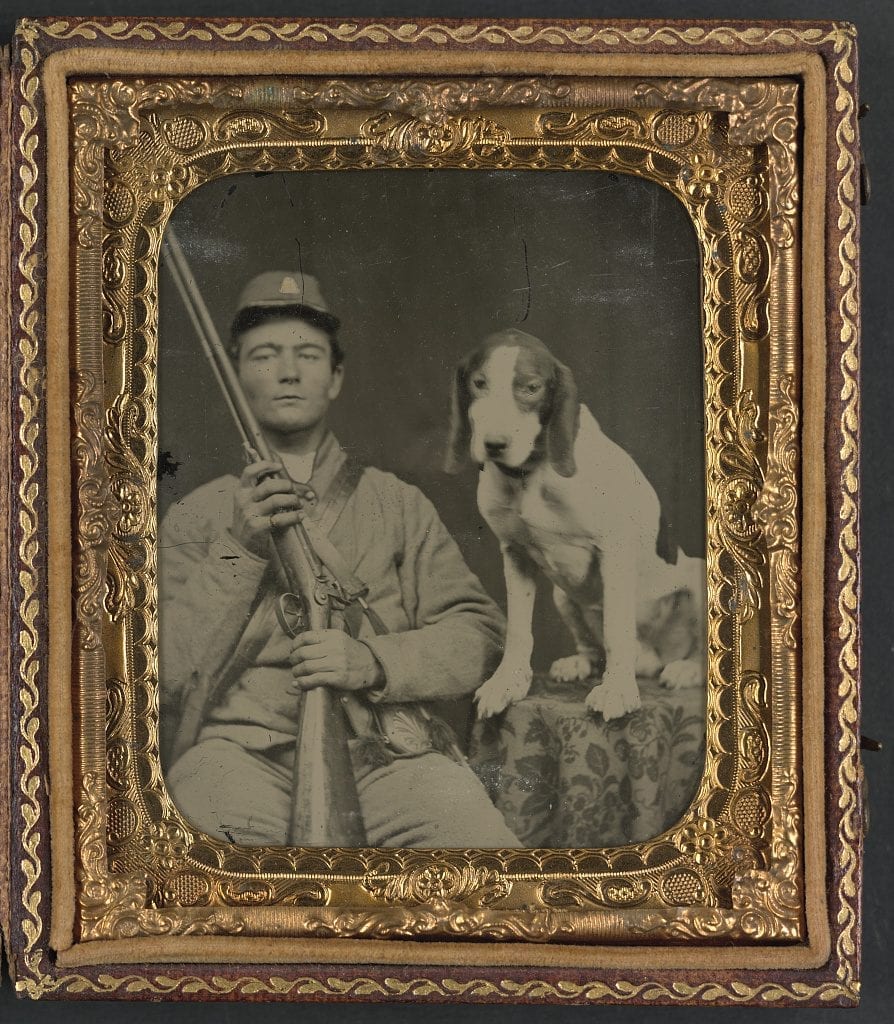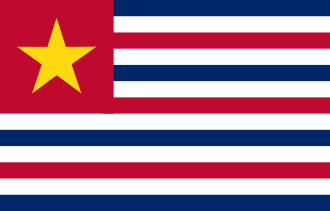Louisiana seceded from the Union on the 26th of January, 1861, becoming a sovereign nation.
The Confederate States of America did not yet exist. Meanwhile this land considered itself an independent country, and was preparing for its defense. Soldiers like the one you see above were being rallied to the cause.
One of the first things this new Louisiana Republic did was adopt a new flag. On the 29th of January the banner you see below became the new symbol of this storied land.
This flag was created by a committee, which referred to it as a “…national flag of the State of Louisiana…” While no one person is credited with its design, we do have a document that tells us who made the first drawing:
“…the sum of 25 dollars be allowed to C. A. DeArmas as a compensation for having made and painted the original drawing which was used in the making of the flag adopted by this convention as the flag of Louisiana.”
This committee stated that they were trying to incorporate elements of earlier flags into this new design. We can easily see the influence of the Stars and Stripes. Southerners held strongly to the roots of American independence, and the colors and design proclaim those ties. The committee wrote:
“The thirteen stripes represent the original 13 colonies…. The blue, the white, the red are emblems of hope, virtue and valor.”
We also see the presence of the legendary Bonnie Blue flag, which originated in 1810 in Louisiana. Its single star is prominently displayed in the upper right. (I have covered the story of the Bonnie Blue and the West Florida Republic in an article seen on our blog.)
Louisiana was once Spanish territory, so we see the colors of Spain in the yellow star with its red background:
“To the children of Spain we dedicate the colors of red and yellow, which we have woven into our plan.”
And finally, in the white, blue and yellow colors we are reminded of another period of Louisiana history, the white, blue and gold hues of the French battle standard.
Surviving examples of this flag are extremely rare today. We do know the the first flag of the republic was raised in Lafayette Square in New Orleans, and it eventually made its way to Boston. In 1875 some veterans borrowed it from the city clerk’s vault for a Bunker Hill celebration. The flag never made it back to that vault.
Records tell us that sailmaker Henry Cassidy made a number of these flags for the state. This is the same Cassidy who was later contracted by Lieutenant General Beauregard to make Confederate Battle Flags. (From New Orleans, Beauregard was the first General appointed to the Confederate Army by Jefferson Davis, and was in tactical command at the Confederate victory at First Manassas. This was the first major battle of the war, and events there led to the creation of the Confederate Battle Flag. But that’s another story.)
The variety of colors on this flag are representative of something else: the richness of Louisiana’s array of people, and their influence on the culture of the land. This region is a crossroads, where the Mississippi joins the Gulf, and men and women of Europe, Africa and the Americas mingled.
We have already seen how the Spanish, French, and the Anglo-Americans mixed here. That included the Irish, who fought well and hard for Louisiana in the war. And no one familiar with the territory could fail to know of the rich influence of Africa and the Caribbean.
Further we have the German, Dutch, Portuguese, Italian, Greek, Scandanavian, Russian, Armenian and Balkan peoples, all part of Louisiana society of that time. In smaller numbers there were Chinese, and some Hindus of India.
Many may not realize how strong the Native American influence was. In other territories the Tribes were working cattle as a way of living. In Louisiana they were deeply involved in the cotton industry. And their warriors fought in the Confederate army as well.
America has become so homogenized today that we often don’t recognize the diversity of the peoples that created our early states. In 1861 those cultures were more distinct.
We are indebted to Louisiana for many things, and the textures of its people have contributed much to what we now experience: from the food and architecture, to the music and arts that have spread across our land – indeed, the world.
This flag is a fitting symbol of that variety, and of the independent spirit that thrives in Louisiana to this day.


